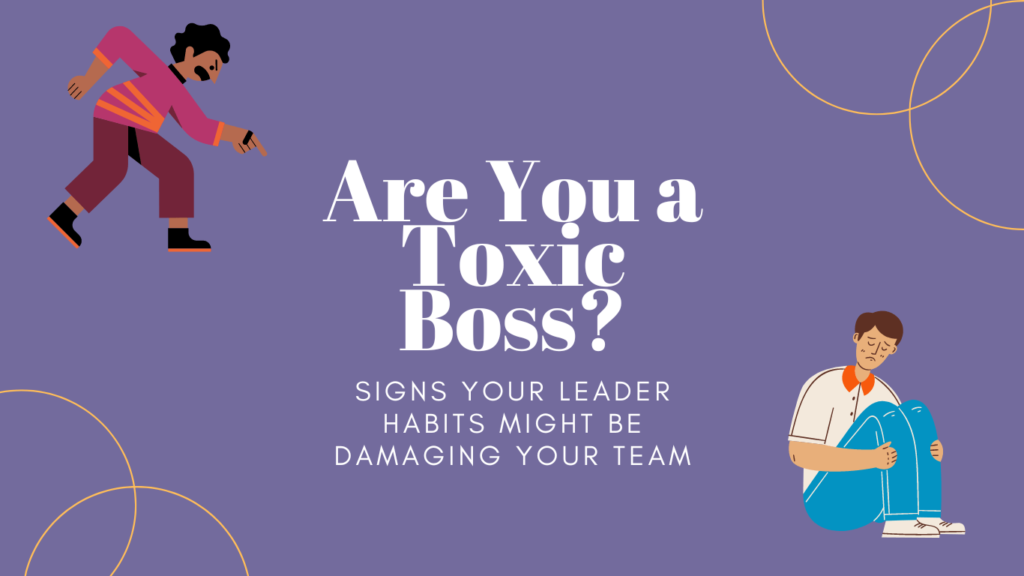Overview and Definition
A toxic boss is a leader whose ongoing, disruptive behavior undermines employee engagement, diminishes trust, and erodes a sense of belonging within an organization. Such managers often hinder autonomy and growth while engaging in abusive or manipulative practices. For instance, as described in one source, a toxic boss demoralizes employees by consistently disregarding their input and forcing them into a culture of fear and self-doubt[1][5]. This behavior not only affects individuals on a personal level but can also have far‐reaching consequences on team morale and organizational success.
Key Warning Signs and Behaviors
Several recurrent patterns can help in identifying a toxic boss. One common sign is micromanagement, where the leader insists on controlling every detail of an employee’s work, leaving little room for independent decision-making[4][9]. Toxic bosses may also habitually dismiss feedback and innovative ideas, exhibiting a 'my way or the highway' mentality that stifles creativity and collaboration[1][9]. Frequently, they use public criticism or belittling comments rather than offering constructive, private feedback, which lowers self-esteem and contributes to an atmosphere of public humiliation[2][7].
Another red flag is when a boss takes credit for work that is not theirs or fails to acknowledge employees’ contributions, thus undermining morale and professional growth[4][3]. They also often shift blame for mistakes onto their subordinates while never admitting their own faults, creating a culture where accountability is absent[6][10]. In addition, playing favorites—offering preferential treatment or opportunities to a select few while marginalizing others—further contributes to a toxic environment[7][3]. Many toxic bosses are unpredictable, displaying drastic mood swings and acting differently when higher-ups are present compared to their treatment of their team[1][8]. These behaviors are sometimes accompanied by manipulative language and even gaslighting, as they use comments like, "You should be grateful to have a job," or "If you don’t like it, there are plenty of people who would take your place," to control and demean their subordinates[4][9].
Patterns of Interaction and Their Impact
The negative behaviors of toxic bosses do not occur in isolation; they form a consistent pattern that impacts the entire team and organization. When a boss continuously micromanages, it sends a signal that they do not trust their employees’ abilities, which can lead to a decrease in overall productivity and increased employee stress[4][9]. Similarly, constant public criticism and the tendency to take credit for others’ work not only demoralize individual employees but also erode team cohesiveness, leading to internal conflict and high staff turnover[3][7].
Moreover, such leaders often create an environment of unpredictability and fear. Their emotional volatility and tendency to blame others result in employees feeling anxious, walking on eggshells, and isolating themselves to avoid negative interactions[1][8]. This toxic dynamic hinders open communication and innovation, reducing the team’s long-term potential and the organization's ability to adapt to change[5][9]. Furthermore, the lack of constructive support or opportunities for growth compounds the problem, as employees are left without clear guidance or recognition, which further damages trust and engagement[3][7].
Strategies for Recognizing Toxic Leadership
Recognizing a toxic boss involves careful observation of day‐to‐day interactions and the specific language used. First, note if your boss is overly controlling or constantly checking on your progress without allowing you space to work independently. If frequent updates and micromanagement dominate your work routine, it is a strong indicator of toxicity[4][9].
Second, pay attention to the way feedback is delivered. A manager who provides only negative, public criticism instead of balanced, constructive feedback is likely fostering an unhealthy environment[2][7]. Additionally, if your boss routinely shifts blame for errors onto you or others and refuses to acknowledge their own mistakes, this pattern should be a major warning sign[6][10].
Observe whether there is a discrepancy in treatment based on personal bias. Favoritism—such as giving certain employees preferential access to resources, opportunities, or praise—can create divisions within the team and is another hallmark of toxic management[3][7]. Finally, listen for language that minimizes your efforts or undermines your confidence. Comments that imply you should be grateful for the position you hold or that use your shortcomings against you are clear indicators of a leader with a toxic mindset[4][9].
Conclusion and Final Thoughts
In summary, identifying a toxic boss requires keen attention to behavioral patterns and interaction styles. Toxic managers often exhibit behaviors such as micromanagement, public humiliation, blame-shifting, and the taking of credit for others’ work. They tend to disregard constructive feedback, display unpredictable emotional outbursts, and engage in favoritism—all of which contribute to an atmosphere of fear and disengagement[1][2][4][6]. Recognizing these warning signs early on is crucial, not only for maintaining your mental and emotional health but also for ensuring a productive, supportive work environment. A clear understanding of these traits, as gathered from multiple sources, can empower you to seek support from colleagues or human resources and eventually guide you in making necessary changes to protect your career and well-being[5][7][9].
Get more accurate answers with Super Pandi, upload files, personalized discovery feed, save searches and contribute to the PandiPedia.
Let's look at alternatives:
- Modify the query.
- Start a new thread.
- Remove sources (if manually added).










